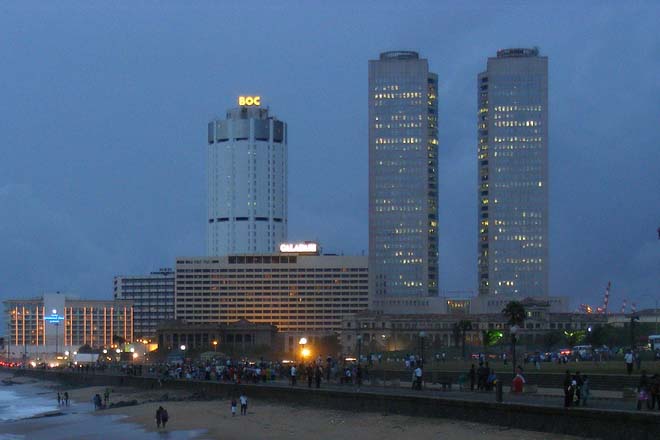Sept 06, 2017 (LBO) - Sri Lanka’s luxury residential condominium prices would stagnate or come down in 2018-2020 due to large levels of unabsorbed supply, Ravi Abeysuriya, group chief executive of Candor Group said.
“Some developers may use more aggressive competitive tactics due to threat on profitability,” he said speaking at the Lanka Property Web Investor Forum 2017 in Colombo recently.
“Significant demand from untapped sources such as foreign high net worth individuals are needed as the supply glut is mostly present in the luxury segment.”
Over 5,000 units are expected to become available in the next three years with about 2,800 in 2018.
Abeysuriya says this level of supply may not be absorbed with current sources of demand.
“However, large price corrections are not expected due to the low level of leverage in the system and large pool of constrained investors.”
“The state has a role to play by improving investor confidence. Capital gains tax may dampen demand from investment driven investor class.”
Speaking to Lanka Business Online, Roshan Madawela, chief executive of the Research Intelligence Unit, a firm which specialize in real-estate market studies, said that the top end of the market will remain as the most challenging.
"We believe that strong GDP growth supported by incentives that make it attractive for non-resident buyers to purchase apartments in Sri Lanka will continue to position Sri Lanka as an internationally attractive proposition where property and apartments are concerned."
"It is unfortunate that this market segment is not being better supported by policy makers as it has the potential to make a significant contribution to the country's FDI and also serves to attract talented individuals and entrepreneurs back to Sri Lanka."
RIU studies show that apart from the top-end, the ‘affordable luxury’ category which is developed to meet the needs of those who primarily buy to live is well supported by demographics and life-style trends.
Consequently, sensibly priced developments that offer convenience of location with good quality features and fittings will continue to experience strong growth, he said.
No Bubble
A housing bubble is a run-up in housing prices fueled by demand, speculation and exuberance.
It usually starts with an increase in demand where speculators enter the market with hope of buying purely to sell at a higher price, further driving demand.
Abeysuriya says no one can accurately predict exactly when an asset bubble will burst but there are signs.
The first being the sharp increase in property prices to unsustainable levels.
“This is the easiest sign to see, however, I must say, Sri Lanka condominium sector is new product which came into prominence only four years ago,” he said.
“As long as people are buying for their use with their-own money then there is no issue – it is only when the borrowed money comes that a bubble happens because then they have short time to sell and they have to sell cheap.”
This can happen to any market or any asset class.
He says that so far there have been 15 bubbles in the real-estate market including India and Malayasia.
Other signs include: Real rental yields – annual rental income net of expenses as percentage of apartment prices, real household income -affordability measures - ratio of median house prices to median disposable incomes, expressed as a percentage.
In Sri Lanka, Abeysuriya says there is a risk of increased lending to property developers.
“We saw a rapid increase in margin lending before the 2010 stock market bubble - lending to property sector has been accelerating during last three and half ½ years,” he said.
“From Jan 2014 to June 2017, year- on – year growth of commercial banks’ loans and advances to construction sector has grown by around 20 percent.
buy nolvadex online buy nolvadex online no prescription
”
As much as 53 percent of total new loans or 567 billion rupees has been loaned out to the property sector after 01st January 2014, 215 billion rupees or 38 percent for housing 352 billion rupees or 62 percent for property developers.
He added that another concern signs to look for were the household debt levels and non-performing loans (NPLs) of the property sector.
“The NPLs would normally go up during a crisis or when a crisis is nearing. As of now, based on the NPL numbers, we do not see an increase in the NPLs to the property sector.”
However, one major default could scare away investors - for example in 2013 there were some concerns of an Indian housing bubble, when in August 2013, Orbit Corporation, a Mumbai-based real estate firm, defaulted US150 million dollars taken from LIC Housing Finance.
“In September 2013, it was reported that about 650 million sq. feet of assets or about 600,000 housing units remained unsold, according to the research firm LiasesForas,” he said.
“Some builders were seen dropping prices and offering other incentives to buyers.”
In the case of the United States the property bubble was mainly due to the low interest rates for a long period of time but in Sri Lanka this is not the case we have higher rates – so it will not happen, he said.
Sri Lanka’s high-end condos under pressure, no bubble yet

